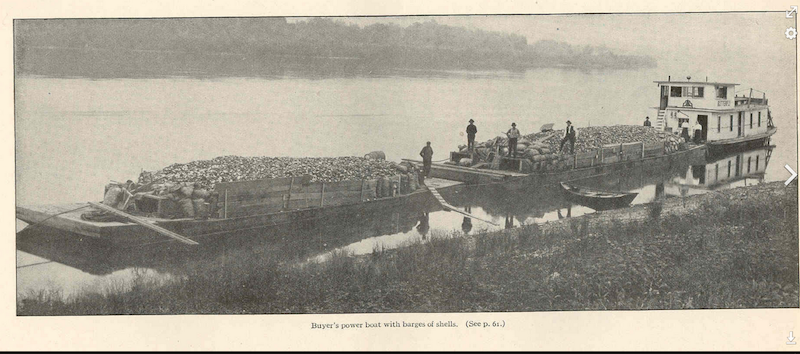On the Carroll endangered species list were several unfamiliar names–“Triangle Floater, Brook Floater, Creeper and Yellow Lamp”. What on earth were these? A type of shelled mollusk adapted to rivers, streams, lakes and ponds–the Freshwater Mussel. Apparently, freshwater mussels are rapidly declining group with many species extinct, endangered or threatened worldwide. The U.S. is considered to be the last mussel stronghold on the planet but still numbers of natives are dwindling.
Most of us have heard of Bouillabaise and other French dishes that contain mussels, but these are edible Marine Mussels (the blue type) which are more closely related to scallops and oysters than to freshwater mussels. The flavor of freshwater types have been compared to a rubbery “dirty old shoe” although Native Americans apparently did eat them.
Mussels are filter feeders, straining microscopic animals, plants and bacteria from the water while converting the waste into larger particles that can be utilized by a greater diversity of other creatures.They improve water quality in the process, especially where there are large numbers at work. Scientists consider them “canaries” of biological water quality. They are highly sensitive to pesticides and pollution in water so scientists see sudden kills as marks of acute toxicity in water while gradual die-off shows longstanding pollution.
Other things killing off mussels are:
- silted water which suffocates them
- pollution accumulating in their tissues
- algae growth from high nutrient runoff reducing oxygen and better quality nutrient flow
- erosion that reveals the hidden juveniles to predators like muskrats,raccoons, ducks, geese, crayfish, fish
- aggressive invaders-zebra mussel that builds on top of native mussels and the greedy Asian clam
- dams that limit movement
This last point is interesting. First, mature mussels are mostly sessile (anchored in place) and generally will only move short distances and slowly at that. If water quality becomes untenable, drought exposes them or predators become too numerous, mussels will be forced to move. However, dams can prevent their moving to better locales.
Then there is the weird reproduction process! The larval stage of mussels are called glochidia. They need to find specific fish (Yellow Perch, Bullhead, Bass, Shiners etc.) or salamanders quickly in order to survive. The female mussels of many species have adapted special tissue flaps on their mantles the resemble the prey of host fish used to nurture the mussel larvae. As the fish approaches and takes a nip, the female releases a cloud of these glochidia which immediately clamp onto the gills or fins on the host fish in a temporary parasitic arrangement for 1 to 4 weeks. Then, they just drop off into the gravel or silt substrate and anchor themselves to grow on. Apparently the hosts aren’t harmed by this… The dams can prevent the necessary connection between host fish and successful growth of mussel larvae by keeping them separated.
Some interesting facts:
- Mussels of some species live up to 100 years, you can see growth rings.
- Large species can grow to 4 lbs and some are 12 inches long.
- Shells found along the Potomac are mostly mussels.
- Hundreds of factories grew along rivers as barges dredged up tons of freshwater mussels to make pearl buttons from punched shell blanks. This contributed to scarcity.
- Japan use pieces of freshwater mussel shells as the “seed” to make round, perfect cultured pearls.
The best waters with be oxygenated, unpolluted, with dissolved calcium for shell making and suspended food particles as well as the presence of the necessary host fish. If you have moving water on your property, you might just check for live mussels or remains from a raccoon feast.



